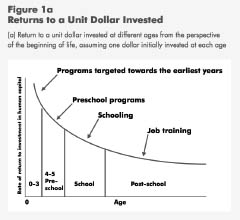
Early Intervention
The Raising of America
28 May 2012
The Raising of America Sample Reel
Visit the website for more information:
The Raising of America reframes the way we look at early child health and development. This ambitious documentary series and multimedia initiative, by the producers of UNNATURAL CAUSES: Is Inequality Making Us Sick?, explores how a strong start for all our kids leads not only to better individual life course outcomes (learning, earning and physical and mental health) but also to a healthier, safer, better educated and more prosperous and equitable America.
Watch UNNATURAL CAUSES: Is Inequality Making Us Sick?
Research and Literature
2002:
Jack Shonkoff M.D. writes From Neurons to Neighborhoods, the Science of Early Development and presents important findings about the effects of genetics, environment, and early stress on brain architecture, the impact of politics on programs for children, and the costs and benefits of early intervention.
Dr. Shonkoff’s book, From Neurons to Neighborhoods demonstrates that the foundation for academic success, economic productivity, and a lifetime of sound health is laid down in the early years of children’s lives, particularly in the first five years. Early childhood experts emphasize the critical need to identify and address developmental, behavioral, and psychosocial issues in young children as early as possible for optimal child development.
2009:
James J. Heckman, Ph.D. is Henry Schultz Distinguished Service Professor of Economics at the University of Chicago, Professor of Science and Society, University College Dublin, Senior Research Fellow, American Bar Foundation, and Alfred Cowles Distinguished Visiting Professor, Yale University. His 2009 study demonstrates the Return on Investment (ROI) by the advantages gained from effective early interventions are best sustained when they are followed by continued high quality learning experiences (fig 1a).

2011:
Macrides and Ryherd write that 12-16 percent of children below age three in the United States have a developmental delay in at least one area including behavioral health. Yet as many as one-half of the affected children will not be identified by the time they enter kindergarten.
Adverse Childhood Experience Study (Centers for Disease Control and Kaiser Permanente) found that many of the 12-16 percent of young children with an identified developmental or behavioral delay are born with low birth weight or are at risk for poor developmental and behavioral outcomes due to an accumulation of factors known as “toxic stress.” These factors include poverty, child abuse and neglect, domestic and community violence, caregiver depression and substance abuse, homelessness, health substance abuse, cognitive disability, and physical illness problems, and barriers to care among many other environmental risks. The damaging effects of toxic stress are cumulative and are known to lead to major developmental and mental health problems that last throughout the lifespan.
2012:
RWCFI supports promising programs for children at risk for poor developmental and behavioral outcomes, first in the greater Hartford Connecticut area.
As many as one thousand Hartford children at risk are born with low birth weight, or are at risk for poor developmental and behavioral outcomes in the first three years of life due to an accumulation of factors known as “toxic stress” as described in the literature. These factors include poverty, child abuse and neglect, domestic and community violence, caregiver depression and substance abuse, homelessness, health problems, and barriers to care among many other environmental risks. The damaging effects of toxic stress are cumulative and are known to lead to major mental health problems, substance abuse, cognitive disability, and physical illness which last throughout the lifespan.(1) We know that 80% of brain growth is completed by three years of age and toxic stress from sustained adverse experiences has been shown to impact the brain and impair developmental and behavioral functioning.(2,3) The older the child, the more difficult it is to change brain structure, the greater the expense, and the poorer the outcome.
1.Adverse Childhood Experience Study, Centers of Disease Control and Kaiser Permanente, 1998-2011
2.Shonkoff, J et a., “Lifelong Effects of Childhood Adversity and Toxic Stress”, Journal of the American Academy of Pediatrics, 2012;129;e232
3.Shonkoff, J, From Neurons to Neighborhoods: the Science of Early Child Development. 2000
RWCFI Support
The RWCFI is committed to supporting ‘promising programs’ for these at risk children provided at the Connecticut Children’s Medical Center through its Office for Community Child Health, a center dedicated to developing and supporting community programs that promote children’s optimal healthy development.<\p>
At the helm of this important program is Dr. Paul H. Dworkin, physician-in-chief of Connecticut Children’s and Chair of the Department of Pediatrics at the University of Connecticut School of Medicine. The goal of the Office is to promote the effectiveness of existing programs currently supported by the Medical Center and to serve as an ‘innovation incubator’ for new programs addressing critical community issues that will improve children’s developmental outcomes.
A Framework for Child Health Services: Supporting the Healthy Development and School Readiness of Connecticut’s Children (Dworkin, Honigfeld, Meyers, 2009) articulates the full continuum of services, from primary health care to highly specialized care, needed in a comprehensive system of child health care.
Promising Programs
Mid-level Developmental Assessment (MLDA): In the category of “selective services,” or “services available to all children and families and likely to be accessed by some to promote early intervention for health and developmental problems,” the Framework identifies the need for Mid-Level Developmental Assessment. The authors describe MLDA as the expedient assessment of a child with a behavioral or developmental health concern identified through screening, “aiming to provide the right child with the right service at the right time”.
Help Me Grow (HMG) is a system that connects at-risk children with the services they need. The National Help Me Grow program, based at the CCMC Office for Community Child Health is an efficient and effective system—with a proven track record---that assists states in identifying at-risk children, then helps families find community-based programs and services. The mission of the Help Me Grow National Center is to enable and support the building of HMG systems across the country so that states can implement effective, universal, early surveillance and screening for all children and link those at risk for developmental and behavioral problems to appropriate programs and services.
Easy Breathing is a community-based asthma management program that translates the national asthma guidelines into a usable format for pediatricians and other health care providers. In 1998, Connecticut Children’s introduced the Easy Breathing program to pediatricians in the Hartford area. The program is now used by more than 330 pediatricians in nearly 100 practices across Connecticut and has more than 110,000 children enrolled.
May 2012:
MLDA Impact Brief:
Creating a Sustainable MLDA System, Child Health and Development Institute (Honigfeld, May 2012)
This impact brief states that pilot MLDA program results strongly favor rapid dissemination of MLDA and represents an innovation that has shown considerable promise in terms of improved experiences for children and families, efficient use of scarce specialist resources and lower costs across the health care system.
